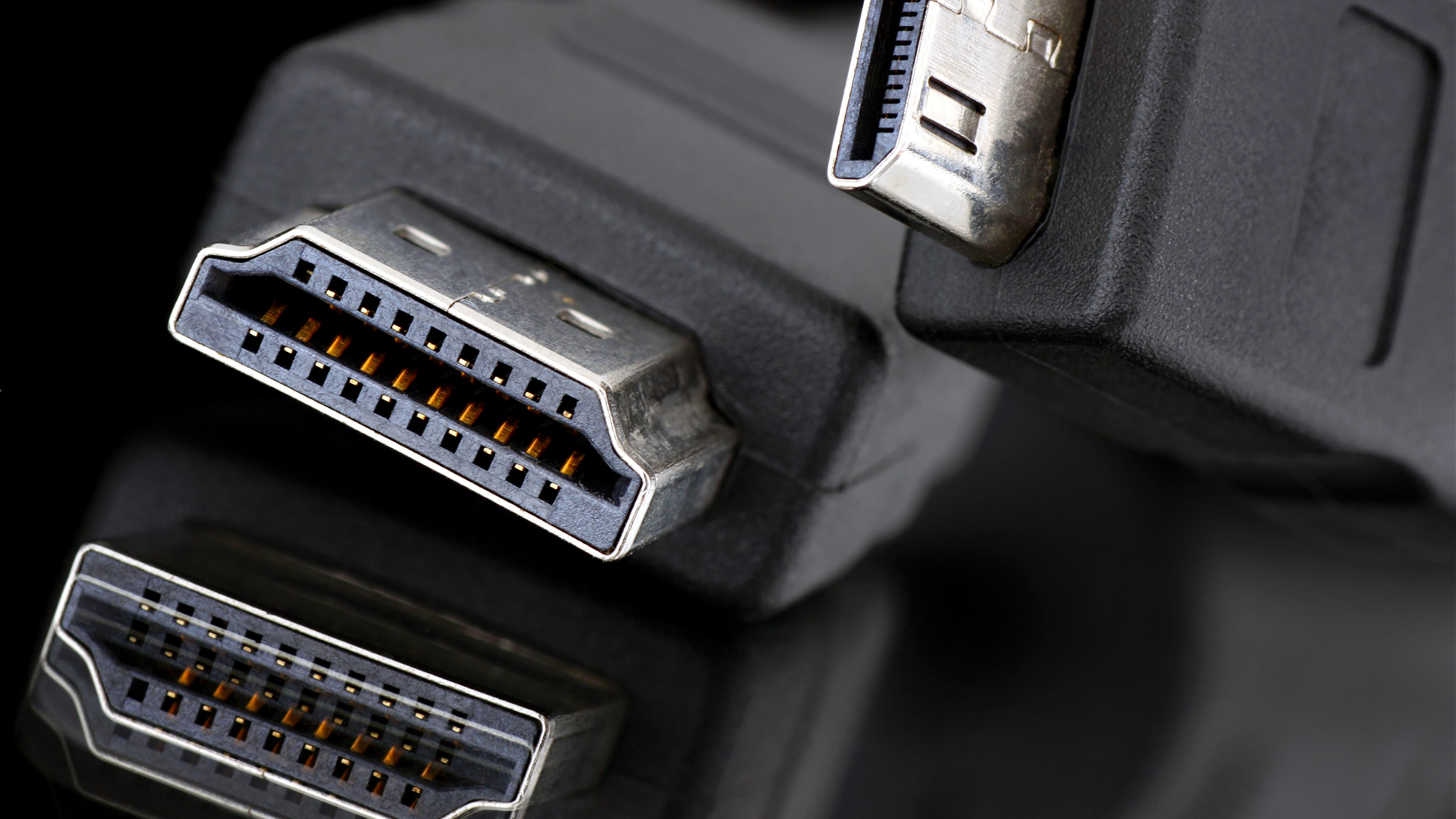China launches HDMI and DisplayPort alternative — GPMI boasts up to 192 Gbps bandwidth, 480W power delivery
Will this cable unlock high refresh 8K gaming?

The Shenzhen 8K UHD Video Industry Cooperation Alliance, a group made up of more than 50 Chinese companies, just released a new wired media communication standard called the General Purpose Media Interface or GPMI. This standard was developed to support 8K and reduce the number of cables required to stream data and power from one device to another. According to HKEPC, the GPMI cable comes in two flavors — a Type-B that seems to have a proprietary connector and a Type-C that is compatible with the USB-C standard.
Because 8K has four times the number of pixels of 4K and 16 times more pixels than 1080p resolution, it means that GPMI is built to carry a lot more data than other current standards. There are other variables that can impact required bandwidth, of course, such as color depth and refresh rate. The GPMI Type-C connector is set to have a maximum bandwidth of 96 Gbps and deliver 240 watts of power. This is more than double the 40 Gbps data limit of USB4 and Thunderbolt 4, allowing you to transmit more data on the cable. However, it has the same power limit as that of the latest USB Type-C connector using the Extended Power Range (EPR) standard.
Standard | Bandwidth | Power Delivery |
|---|---|---|
DisplayPort 2.1 UHBR20 | 80 Gbps | No Power |
GPMI Type-B | 192 Gbps | 480W |
GPMI Type-C | 96 Gbps | 240W |
HDMI 2.1 FRL | 48 Gbps | No Power |
HDMI 2.1 TMDS | 18 Gbps | No Power |
Thunderbolt 4 | 40 Gbps | 100W |
USB4 | 40 Gbps | 240W |
GPMI Type-B beats all other cables, though, with its maximum bandwidth of 192 Gbps and power delivery of up to 480 watts. While still not a level where you can use it to power your RTX 5090 gaming PC through your 8K monitor, it’s still more than enough for many gaming laptops with a high-end discrete graphics. This will simplify the desk setup of people who prefer a portable gaming computer, since you can use one cable for both power and data. Aside from that, the standard also supports a universal control standard like HDMI-CEC, meaning you can use one remote control for all appliances that connect via GPMI and use this feature.
The only widely used video transmission standards that also deliver power right now are USB Type-C (Alt DP/Alt HDMI) and Thunderbolt connections. However, this is mostly limited to monitors, with many TVs still using HDMI. If GPMI becomes widely available, we’ll soon be able to use just one cable to build our TV and streaming setup, making things much simpler.
Stay On the Cutting Edge: Get the Tom's Hardware Newsletter
Get Tom's Hardware's best news and in-depth reviews, straight to your inbox.

Jowi Morales is a tech enthusiast with years of experience working in the industry. He’s been writing with several tech publications since 2021, where he’s been interested in tech hardware and consumer electronics.
-
setx If it's open like DP and support longer cables – it would be really nice.Reply
Now we need Chinese GPUs to get to decent performance levels for adoption. -
Daniel15 Reply
Please explain how a cable is going to spy on you.8086 said:<<Removed by moderator>>
Also, a large number of cables and HDMI/DP/USB connectors are already manufactured in China today. -
aberkae Reply
If the cable has network capabilities or attempts to connect to the internet for telemetry it's not impossible.Daniel15 said:Please explain how a cable is going to spy on you.
Also, a large number of cables and HDMI/DP/USB connectors are already manufactured in China today.
Also this.
https://www.pcworld.com/article/2413156/hackers-can-wirelessly-watch-your-screen-via-hdmi-radiation.html -
COLGeek Folks, please stay on topic by discussing the technology. Attacks and insults are not helpful, in any way.Reply
Leave politics for other sites. Thank you. -
jlake3 Reply
What cables are connecting to the internet for telemetry? Displayport to my knowledge don't support the kind of connectivity you'd need for that. HDMI does support ethernet and you could attach a small, malicious ethernet device... but no device I've seen has had the option to bridge network connections to HDMI, much less defaulted to it (and a cable that sticks a malicious device here might break ARC). Thunderbolt or USB4 cables could secretly include a hub and hang a malicious device off the hub... but it's gonna show as a hub and have to load drivers on the host system to enable the device to talk to the internet, and being asked to load an unsigned driver for your USB cable should be the biggest of red flags.aberkae said:If the cable has network capabilities or attempts to connect to the internet for telemetry it's not impossible.
I have no idea how GPMI would implement a backdoor that wouldn't be immediately obvious to Intel/Nvidia/AMD/Qualcomm (or people making devices with their chips).
While theoretically possible, that is not a realistic threat at this time for anyone not being targeted by state-level actors.aberkae said:https://www.pcworld.com/article/2413156/hackers-can-wirelessly-watch-your-screen-via-hdmi-radiation.html -
Konomi Reply
Is a load of paranoia, such attacks require a relatively close range to be feasible. And wouldn't require entirely new technology or standards like this cable to do. But I guess people want an excuse to spout anti-Chinese nonsense.jlake3 said:What cables are connecting to the internet for telemetry? Displayport to my knowledge don't support the kind of connectivity you'd need for that. HDMI does support ethernet and you could attach a small, malicious ethernet device... but no device I've seen has had the option to bridge network connections to HDMI, much less defaulted to it (and a cable that sticks a malicious device here might break ARC). Thunderbolt or USB4 cables could secretly include a hub and hang a malicious device off the hub... but it's gonna show as a hub and have to load drivers on the host system to enable the device to talk to the internet, and being asked to load an unsigned driver for your USB cable should be the biggest of red flags.
I have no idea how GPMI would implement a backdoor that wouldn't be immediately obvious to Intel/Nvidia/AMD/Qualcomm (or people making devices with their chips).
While theoretically possible, that is not a realistic threat at this time for anyone not being targeted by state-level actors. -
jdub06 Has anyone seen this in action? If lno one adopted, produced or mentioned implementation specs other than x GB/s and 480w can we even consider this real?Reply
I am releasing a standard that'll carry 4x times what this cable can in data and power. It will go twice as far too. I also promise 2kw on 30 gauge wire.
It's going to be so OP. Seriously though, 480 w sounds great until you think about how thick the cable needs to be at any distance and how rare the power electronics that handle that are. They could try to double the max USB PD voltage I've seen, but the power fets that handle that get expensive. Huge cable or high price? Or max length limit of like a foot and still decently thick wires? All sound gross.
And either one to what? The 1 other device that this ends up implemented on?
I could believe if they adopted usb PD and the 20v that tops at. I seriously doubt anyone's going to be happy with how thick a 480w version of that ends up being
My best guess is we never see this so called standard in the wild. If we do it won't be as stated here. I most seriously doubt the power claim.